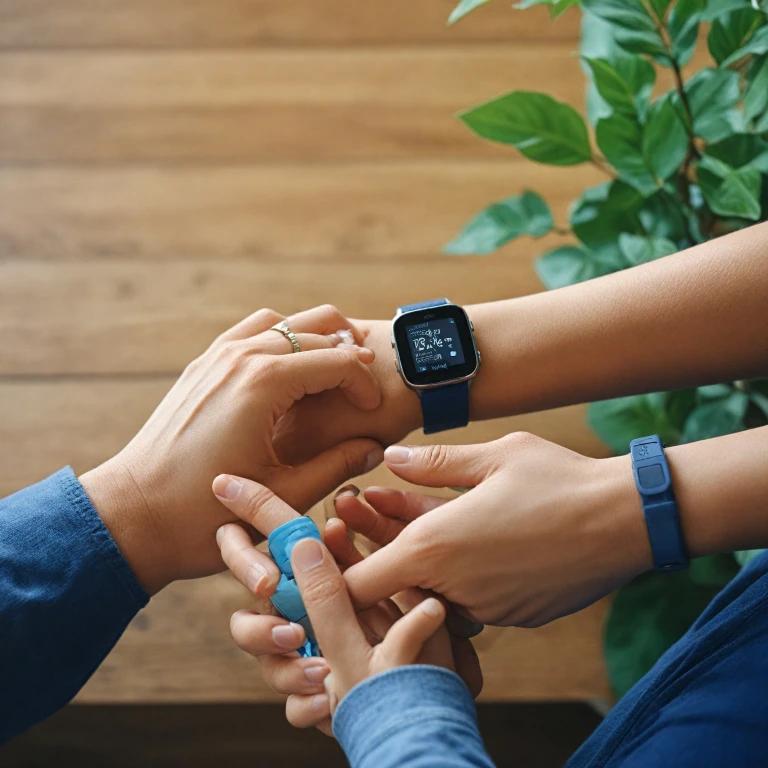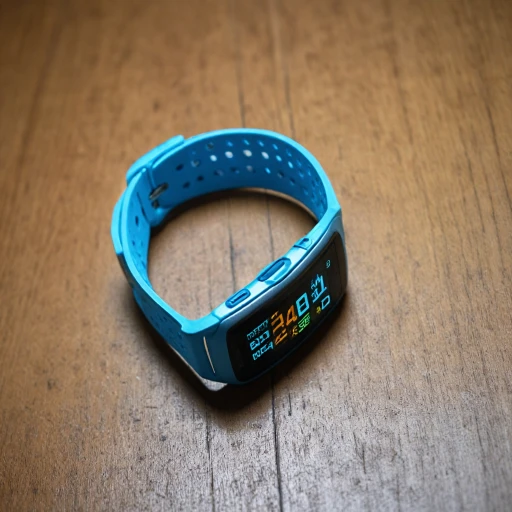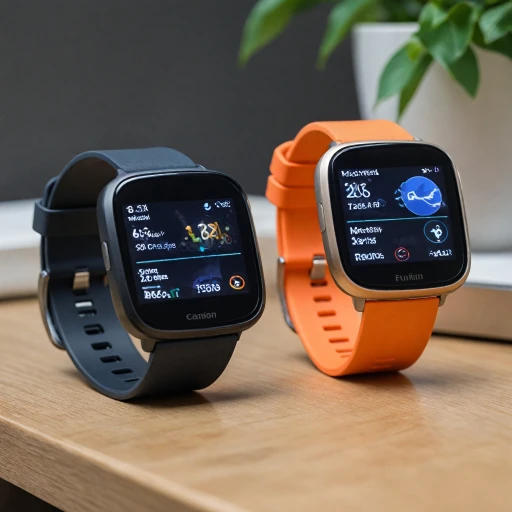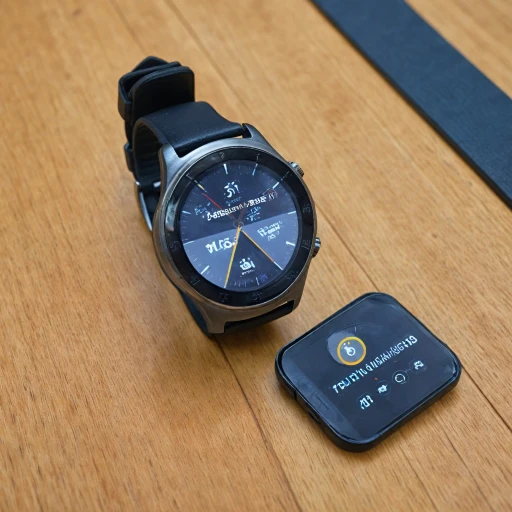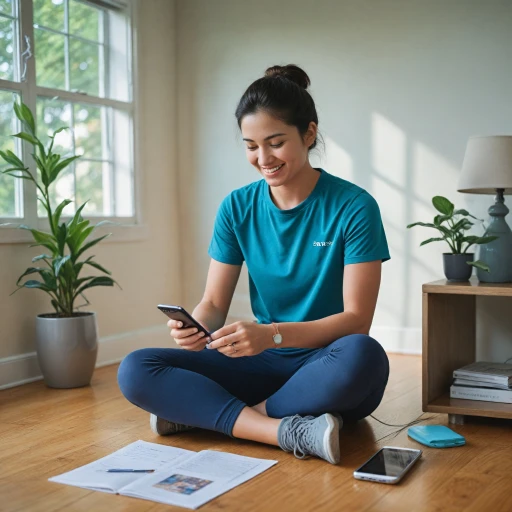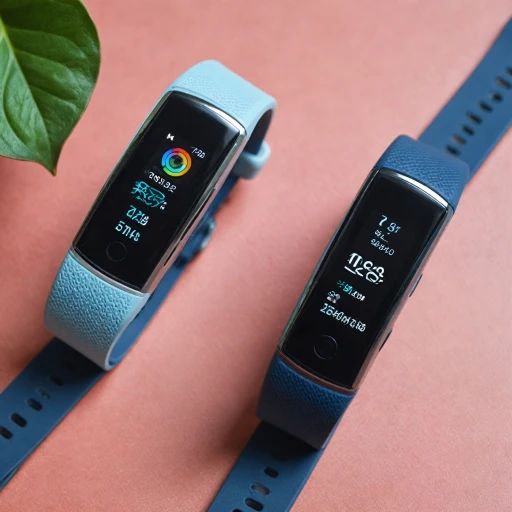Understanding When to Restart Your Fitbit
Recognizing the Ideal Times to Restart Your Fitbit
Understanding when to restart your Fitbit device can ensure optimal performance and resolve any recurring issues. High reliability and seamless functionality are important for any tech gadget, and the Fitbit tracker is no exception. Restarting your Fitbit isn't always necessary, but there are instances that signal it's time to give your device a fresh start.- Device Unresponsiveness: If your Fitbit becomes unresponsive or the screen fails to respond to touch or button commands, a restart could restore normal operation.
- Persistent Syncing Issues: When your Fitbit isn’t syncing with the Fitbit app, or if the data from your device aren't appearing in the app, a reset might resolve the problem.
- Poor Battery Performance: Experiencing rapid battery drain can indicate that the Fitbit needs a restart. Simply charging the device won’t always solve the problem, and further action, like a restart, can be beneficial.
- Software Glitches or Freezes: Just like any tech device, a Fitbit might experience occasional work stoppages or glitches that affect its usage, calling for a reset.
- Connectivity Problems: Whether it's difficulty connecting to Bluetooth or a sudden disconnection from the device, restarting your Fitbit can often restore connectivity.
Step-by-Step Guide to Restarting Different Fitbit Models
Restarting Fitbit Models: A Step-by-Step Manual
Restoring your Fitbit device to optimum performance often begins with a restart. Here's a detailed guide to navigate the nuances of restarting various Fitbit models effectively.Fitbit Charge Series
For the Fitbit Charge series, it's pretty straightforward. Start by plugging your charging cable into a USB port on your computer. Attach the other end to your Fitbit Charge device.- Once connected, press and hold the button on the side of your device for around 8 seconds.
- You'll see the Fitbit logo appear on the screen; when it does, release the button.
- Your Fitbit Charge will restart, clearing temporary data without affecting stored information.
Fitbit Versa Series
When it comes to the Fitbit Versa series, the process slightly varies:- Begin by holding the left button and the bottom right button simultaneously until the Fitbit logo appears on the screen. This usually takes around 10 seconds.
- Release the buttons once the logo appears, indicating the commencement of the restart process.
Fitbit Sense and Luxe
Restarting the Fitbit Sense or Luxe also follows a simplified method:- Ensure your device is off the wrist and gently press and hold the button for 10 seconds.
- Release the button once the screen turns black and the Fitbit logo surfaces.
Troubleshooting Common Restart Problems
Addressing Common Restart Issues
Even with a clear guide, sometimes restarting your Fitbit device doesn't go as smoothly as planned. Here are some common problems you might encounter and how to troubleshoot them effectively.
- Device Not Responding: If your Fitbit tracker remains unresponsive after attempting a restart, ensure that the device is properly connected to its charging cable. A secure connection to the USB port is crucial. Check if the cable or USB port is damaged and try using a different one if necessary.
- Fitbit Logo Not Appearing: When you press and hold the button, the Fitbit logo should appear on the screen. If it doesn't, ensure you're holding the button for the correct number of seconds. For models like the Fitbit Versa, pressing and holding the button for at least 10 seconds usually works.
- Factory Reset Issues: If a factory reset is required, navigate to the settings app on your Fitbit device. This process is different from a simple restart and will erase all data. Make sure to back up any important information before proceeding.
- Charging Problems: If your Fitbit won't charge, check the charging cable and USB port. Sometimes, dirt or debris can prevent a proper connection. Clean both the cable and the port, and try again.
For more detailed instructions on restarting specific models, refer to our step-by-step guide. Understanding these common issues can help you maintain your Fitbit in top condition, ensuring it functions optimally.
Maintaining Your Fitbit Post-Restart
Optimizing Your Fitbit's Functionality After a Successful Restart
After successfully navigating the restart process of your Fitbit device, maintaining its functionality is crucial to ensure it continues to meet your fitness tracking needs. Whether you're using a Fitbit Charge, a Fitbit Versa, or even a Fitbit Luxe, here are steps to keep your device in tip-top shape.- Regular Charging: Ensure your Fitbit is regularly charged using only the approved charging cable and USB port. This not only extends the battery life but also keeps the device ready to track your activities.
- Data Syncing: Frequently sync your tracker with the Fitbit app available on your smartphone. Regular syncing avoids data loss and helps keep all your fitness statistics up to date.
- Software Updates: Keep your device's software up to date by checking for any updates through the settings app. Manufacturers release updates to enhance performance and introduce new features.
- Secure Settings: After a restart, verify that your settings are intact, especially if you had customized them. Adjust parameters like display brightness, notifications, and vibration to suit your preferences.
- Explore Features: Take this opportunity to explore any new or existing features that could enhance your user experience. Discover functions that you may not have utilized before by referring back to the device manual or exploring the settings app.
- Troubleshooting Preparedness: Familiarize yourself with common issues and their solutions after a restart to be prepared for any unforeseen disruptions. Understanding how to manually reset, if needed, can save time.
Exploring Advanced Fitbit Features
Unlocking the Full Potential of Your Fitbit
Once you've mastered the art of restarting your Fitbit device and troubleshooting common problems, it's time to delve into the advanced features that make these trackers extraordinary. The brand offers a range of functionalities that can enhance your overall experience and maximize the tracker’s potential.
Utilizing the Health and Fitness Features
At the core, all Fitbit devices, including models like the Fitbit Versa and Fitbit Sense, are designed to improve your fitness journey. Dive into various features such as:
- Heart Rate Monitoring: Consistently track your heart rate to understand how your body works during different activities.
- Sleep Tracking: Monitor your sleep patterns, learn from the data, and adjust your routine for better rest.
- Active Zone Minutes: Recognize the intensity of your activity through precise heart-rate metrics.
- Floors Climbed: Gain insights into your everyday activity beyond steps with stair tracking.
Accessing Smart Features
These devices are not just about fitness. They bring a plethora of smart functionalities to your wrist, such as:
- Notifications: Stay connected with call, text, and calendar alerts directly on your screen.
- Apps and Music: Use select apps and control your music experience seamlessly.
- Wallet and NFC: Make secure purchases without needing your wallet with the help of Fitbit Pay.
Customizing Your Fitbit Experience
Personalization is a key part of the Fitbit experience. Here’s how you can make your device truly yours:
- Customize Watch Faces: Select from a wide array of watch faces to express your style or match your needs.
- Change Bands: swap out bands to suit your activity or mood.
- Adjust Settings: Navigate through the settings app to configure preferences like display, notifications, and more for a tailored experience.
By familiarizing yourself with these features and consistently syncing your device, you will harness the maximum benefits that your Fitbit has to offer. Keep your device charged and ready to track, taking advantage of the charging cable and USB port solutions provided in previous sections.
Comparing Fitbit with Other Smartwatches
Fitbit vs. Other Smartwatches: A Comparison
Navigating the world of wearable technology can be overwhelming, especially when deciding which smartwatch is right for you. When comparing Fitbit to other smartwatches, several factors come into play. Here’s a detailed breakdown of their distinctions:- Health and Fitness Tracking: Fitbit places a significant emphasis on health and fitness. Features like heart rate monitoring, sleep tracking, and activity tracking set Fitbit apart. Models like the Fitbit Charge and Fitbit Versa series are particularly noted for their advanced tracker capabilities.
- Operating System and Compatibility: Compatibility with different operating systems can be a deciding factor for users. Fitbits generally offer smooth integration with both Android and iOS via their app, but they don’t offer as many third-party apps as some competitors.
- Design and Customization Options: Many smartwatches boast sleek designs and multiple customization options, including different straps and screen displays. The Fitbit Luxe, for example, is designed as both a functional device and a fashion accessory, comparing favorably in terms of style to other brands.
- Battery Life: A stronghold for Fitbit devices is their battery life, which often outlasts many competitors. Your Fitbit can last up to several days on a single charge, compared to the shorter battery life of some other devices.
- Ease of Use and Setup: Setting up a new Fitbit device involves basic steps such as charging your device with a USB cable and configuring the settings via the Fitbit app. For those interested in how to do this effectively, the ease of setup often gives Fitbit an added advantage.
